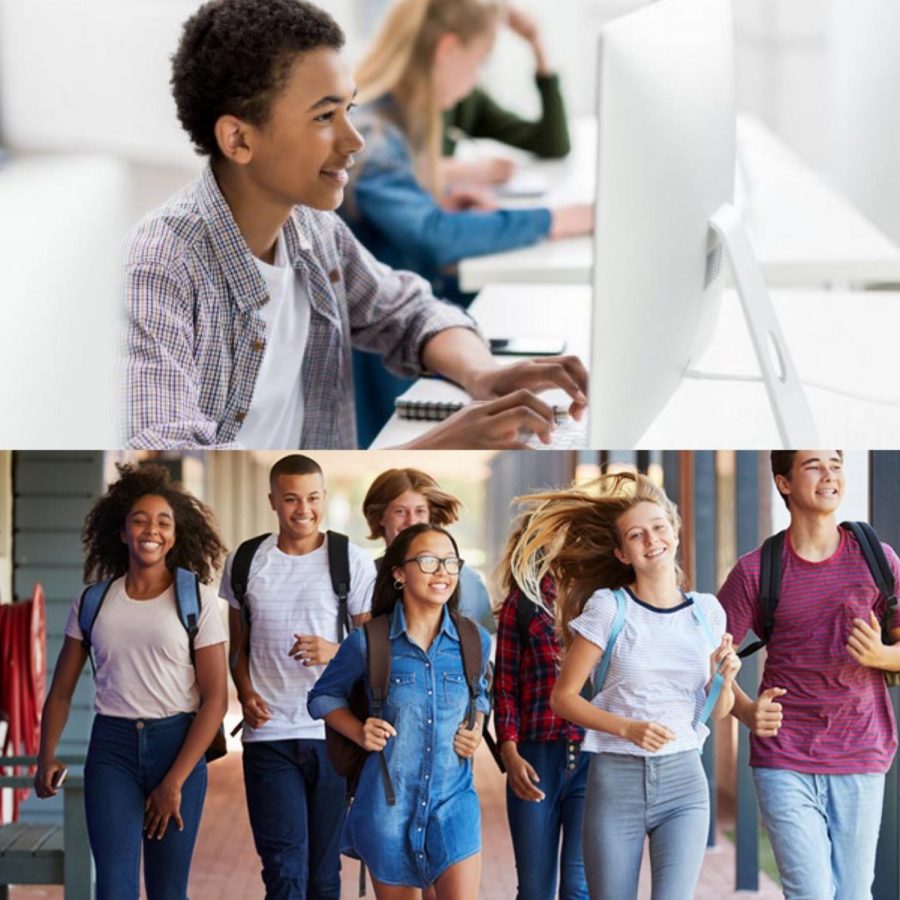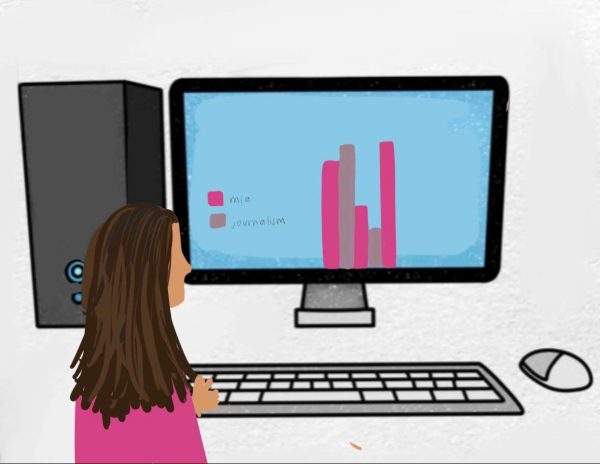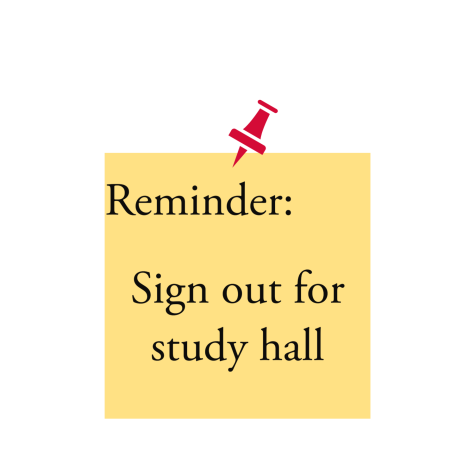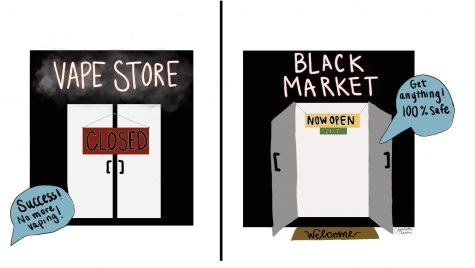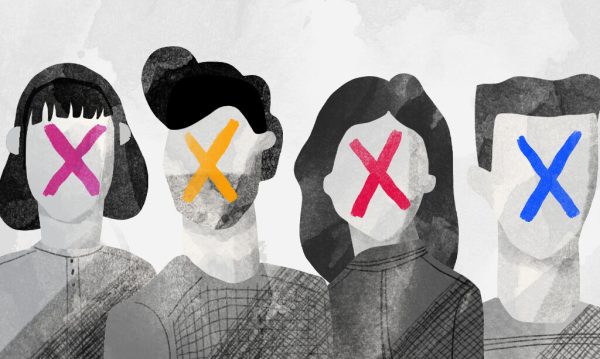Debate: Should Students Return to School?
YES – We should go back full time
By Cate Stanton
Recently, the Massachusetts Board of Elementary and Secondary Education, along with Commissioner Jeffrey Riley, voted to change the learning regulations for Massachusetts schools starting on April 5. Governor Charlie Baker has been pushing to reopen schools because he believes all students should be attending school in person to receive a complete education. Switching from the hybrid model to five days a week in person is a good decision because it benefits students’ mental health and learning abilities, as well as benefiting teachers since they will be able to teach all students in a classroom at once.
For some students, school is a getaway from an unstable home. With hybrid and remote learning, students are only in school two days a week, and home for the rest of the week. The school offers help to those who need it; whether it is talking to a guidance counselor or getting help with homework in the transition room. Yet, unstable homes are not solved by an email from the guidance counselor. Being in school also gives more of an opportunity for students to check in with their teachers if they need extra help or to make up missed tests and quizzes.
Learning online is inefficient compared to learning in person in school. For example, a math class being taught over a GoogleMeet is not going to be as beneficial for students in a class in person. It is also harder to ask questions when the teacher is teaching synchronously with people in class as well. For teachers, it is tough to know if students at home are paying attention and actually understanding the lesson because they are not in the same room with them.
At Walpole, some teachers are teaching both cohorts synchronously, while others teach asynchronously. Either way, teachers are doing double the work they usually have to in a normal year because they have to post class assignments on Google Classroom and also have the assignments ready to go for the in-class students. Most teachers have to give tests on separate days so both cohorts can take the test in class.
The second wave of COVID-19 cases is over and the total Massachusetts confirmed cases is decreasing every day. On Jan. 15, at the peak of the second wave, there were 5,918 confirmed cases and on March 11, there were 1,809. With teachers now being allowed to get their first doses of the vaccine, they should have their second dose before school goes all in person on April 5. COVID-19 is the least dangerous for people ages 19 and under, which is why it makes sense for students to go back to school with safety protocols (desks spaced 3 feet apart, masks, one-way hallways, etc). The state is also realizing that most students are not getting COVID-19 from being in school, but from family and friends instead.
Students going back to school in person is beneficial for everyone. Students learn better in classrooms, teachers will not have to teach a class in person and online at the same time and parents who work and need to help their elementary school children with school will get a break. Those who live with someone with a compromised immune system or those that are more worried about COVID-19 will still have the option to go fully remote and continue to learn from home.
NO – We should continue with hybrid
By Katie Gillis
Over the summer, school nurses and administrators developed a hybrid plan for Walpole students to return to school part-time. This plan has been successful for six months, but now, they are forced to make a completely new plan for fully in-person learning in the span of just a few weeks. By sending all students back to in-person school, we would be disrupting the system that has worked for almost the entirety of the school year and risking an increase in COVID-19 transmission that would force the school to go fully remote.
For over a year now, students and teachers have been forced to adjust to some form of online school, whether it be hybrid or fully remote learning. In Walpole, that meant changing to a hybrid plan for the 2020-2021 school year, in which half the students attend classes in person on Monday and Tuesday and the rest are in person Thursday and Friday. Teachers have already had to adjust their lesson plans to fit this schedule, and now they are expected to readjust them in the middle of the school year with only a few weeks notice.
With the new hybrid schedule, students have half the classes during the first semester and the rest during the second semester. As a result, students have four, 90 minute classes per day. According to a study done by resilienteducator.com, students’ attention spans are only 10-18 minutes long. This is not as big of a deal on remote days, because students who need a break are able to get up and walk around or grab a snack whenever they need a break from their classes. However, students who are learning in person do not get that opportunity. Sitting in class for 90 minutes straight, five days a week will be a lot more difficult after getting so used to being able to take breaks.
The Centers for Disease Control and Prevention (CDC) recommends that everyone stay six feet apart with a mask on at all times. As of now, Walpole students are able to maintain this distance in the classrooms. However, switching to the fully in-person plan will change that. Students would only be three feet apart in the classrooms, which increases their chances of contracting COVID-19 or getting contact traced.
With the hybrid plan, any students who are contact traced are able to join the Google Meet and complete the assignments on Google Classroom, just like normal. However, with the in-person plan, students will not have the convenience of joining from home because class will be focused around the students who are in school. This is extremely disruptive for students’ learning, and attempting to make up any missing assignments or assessments will be overwhelming. Students at school are frequently getting contact-traced, and unfortunately, this number will only increase when we return to school. They should not be disadvantaged for something beyond their control.
By remaining with the hybrid plan for just two months until the school year ends, we would be saving students, teachers, nurses and other administrators a lot of trouble. It will be easier to adjust to a new schedule at the start of the year rather than in the middle of it. By the time school starts again in the fall, most people will likely be vaccinated and numbers will be down, so it will be a lot safer and we have less of a chance of being shut down again. As much as returning to fully in-person learning sounds ideal, it is better to be in person half of the time than not at all.

Katie Gillis, class of 2022, is co-Editor-in-Chief of The Searchlight. At Walpole High School, she captains the indoor and outdoor track teams and is participates...

Cate Stanton, class of 2022, is co-Editor-in-Chief of The Searchlight. At Walpole High School she is co-President of the French Club, a member of the National...



